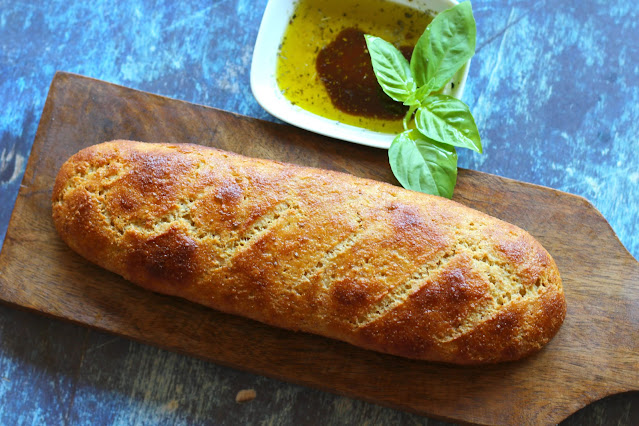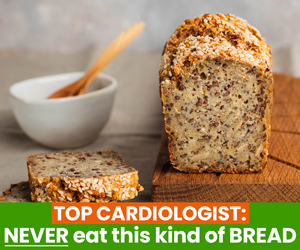7 Tips for Making the Perfect Keto Bread
Table of content
● Introduction
● Fat-Burning Bread: A Healthy Twist to Your Daily Indulgence
● Fat-Burning Bread: Your Secret Weapon for Weight Loss
● New Fat-Burning
Keto Bread
● Avoid Bread Except
THIS Unique Bread (Delicious Too)
●
● The Truth About Bread: Separating Fact from Fiction
Introduction
In recent years, the ketogenic diet has gained immense popularity for its effective weight loss and health benefits. One of the challenges faced by individuals following this low-carb, high-fat diet is finding suitable alternatives for their favorite foods, especially bread. Traditional bread is high in carbohydrates, making it a no-go for those on a keto diet.
Enter keto breads – a innovative solution that allows bread lovers to indulge in their favorite baked goods while staying true to their low-carb lifestyle. Keto breads are specially crafted recipes that replace traditional wheat flour with low-carb alternatives like almond flour, coconut flour, or flaxseed meal. These ingredients are not only low in carbohydrates but also offer a range of nutrients, making keto breads a healthier choice overall.
What sets keto breads apart is their ability to mimic the texture and taste of regular bread without the high carb content. Whether you're craving a sandwich, toast, or a simple snack, keto breads provide a satisfying and guilt-free option. Additionally, they open the door to a world of creative recipes, including keto-friendly bagels, muffins, and even pizza crusts.
In this guide, we will explore the diverse realm of keto breads, offering you a collection of delicious and easy-to-make recipes. From basic almond flour bread to savory garlic butter rolls, you'll discover a variety of options to suit your taste buds and dietary preferences. We'll provide step-by-step instructions, tips, and tricks to ensure your keto bread baking endeavors are successful every time.
Whether you're a seasoned keto enthusiast or just starting your low-carb journey, this guide will empower you to enjoy the goodness of bread without compromising your dietary goals. So, put on your apron, preheat your oven, and let's embark on a flavorful adventure into the world of keto bread baking!
 |
| 7 Tips for Making the Perfect Keto Bread |
Fat-Burning Bread: A Healthy Twist to Your Daily Indulgence
Fat-Burning Bread: Your Secret Weapon for Weight Loss
.jpg) |
| 7 Tips for Making the Perfect Keto Bread |
New Fat-Burning Keto Bread
.jpg) |
| 7 Tips for Making the Perfect Keto Bread |
Avoid Bread Except THIS Unique Bread (Delicious Too)
While bread is a staple food for many people, it can be high
in calories, carbohydrates, and sodium, which can contribute to weight gain,
high blood pressure, and other health problems. If you're trying to eat
healthier, you may want to avoid bread altogether or limit your intake.
However, there are a few types of bread that are healthier
than others. These breads are typically made with whole grains, which are a
good source of fiber and other nutrients. They are also often lower in calories
and sodium than white bread.
Here are a few healthy bread options:
- Whole-wheat
bread: This bread is made with whole wheat flour, which is a
good source of fiber. Fiber can help you feel full and
satisfied, which may help you eat less. It can also help
regulate your blood sugar levels.
- Rye
bread: Rye bread is made with rye flour, which is a good source
of protein and fiber. It also has a lower glycemic index than white
bread, which means it won't cause your blood sugar levels to spike as
much.
- Sourdough
bread: Sourdough bread is made with fermented dough, which makes
it easier to digest and may help improve gut health. It is also a
good source of B vitamins.
- Ezekiel
bread: Ezekiel bread is made with sprouted grains, which are
more nutrient-dense than non-sprouted grains. It is also a good
source of fiber and protein.
If you're looking for a healthy bread option, be sure to
read the label carefully. Some breads that are labeled as "whole
wheat" may still contain white flour. You should also look for breads that
are low in sugar and sodium.
Here are some additional tips for healthy bread consumption:
- Eat
bread in moderation. Even healthy bread is still high in
calories, so it's important to eat it in moderation. A slice of
bread is a good serving size.
- Choose
whole-grain bread over white bread. Whole-grain bread is a better
source of fiber and nutrients than white bread.
- Pair
your bread with protein and healthy fats. This will help you feel
full and satisfied and may help you avoid overeating.
- Toast
your bread. This can help reduce the amount of calories in your
bread.
- Make
your own bread. This is a great way to control the ingredients and
make sure your bread is healthy.
By following these tips, you can enjoy bread as part of a
healthy diet.
Discover the Healthiest Bread Options for Your Well-being
In the quest for a balanced and nutritious diet, the type of
bread you choose can significantly impact your overall health. With a myriad of
options available, it's essential to identify the healthiest bread varieties to
support your well-being. Let's explore some of the top choices that can elevate
your nutrition and satisfy your taste buds.
1. Whole Grain Bread: Whole grain bread, made from
whole grains like wheat, oats, or barley, retains all parts of the grain,
ensuring you benefit from essential nutrients and dietary fiber. Fiber aids
digestion, keeps you full longer, and helps regulate blood sugar levels. Look
for labels that specify "100% whole grain" to ensure you're getting
the maximum nutritional value.
2. Sprouted Grain Bread: Sprouted grain bread is made
from whole grains that have begun to sprout. Sprouting increases the bread's
nutrient content and makes it easier to digest. It often contains fewer
preservatives and artificial ingredients, making it a healthier choice.
3. Sourdough Bread: Traditional sourdough bread is
made through a fermentation process, where natural yeast and bacteria break
down gluten and phytic acid. This process can make the bread easier to digest
and may enhance nutrient absorption. Authentic sourdough, crafted with minimal
ingredients, is an excellent option for those looking for a gut-friendly bread.
4. Rye Bread: Rye bread is dense and hearty, offering
a distinct flavor and a range of health benefits. It is often lower in gluten
than wheat bread and contains a good amount of fiber, which promotes digestive
health. Rye bread's unique nutritional profile makes it a popular choice among
health-conscious individuals.
5. Gluten-Free Bread: For individuals with gluten
sensitivities or celiac disease, gluten-free bread made from alternative flours
like almond, coconut, or quinoa can be a suitable option. It's important to
check labels to ensure these breads are fortified with essential nutrients, as
gluten-free flours might lack some vitamins and minerals found in traditional grains.
6. Homemade Bread: Consider baking your own bread at
home using whole grain flours and minimal additives. This way, you have
complete control over the ingredients, ensuring your bread is free from
preservatives and unnecessary sugars. Experimenting with various grains, seeds,
and nuts can enhance both the nutrition and flavor of your homemade creations.
When choosing bread, always read labels carefully, focusing
on ingredients and nutritional information. Opt for bread with minimal added
sugars, preservatives, and artificial additives. By making informed choices,
you can enjoy the simple pleasure of bread while supporting your health and
well-being.
.jpg) |
| 7 Tips for Making the Perfect Keto Bread |
The Truth About Bread: Separating Fact from Fiction
Bread, a staple food in many cultures, has been a part of
human diet for centuries. However, in recent years, bread has come under
scrutiny, and various myths and misconceptions have surfaced regarding its
impact on health. Let's unravel the truth about bread, separating fact from
fiction.
1. Not All Bread Is Created Equal: There is a wide
variety of bread available, ranging from highly processed white bread to whole
grain and artisanal options. Whole grain bread, made from unrefined grains,
contains valuable nutrients and dietary fiber. In contrast, white bread often
lacks these nutrients due to the refining process, where the outer bran and
germ are removed. When choosing bread, opt for whole grain or whole wheat
varieties for maximum nutritional benefits.
2. Carbohydrates Are Essential: Carbohydrates, found
in bread, are a crucial source of energy for the body. Whole grain bread
provides complex carbohydrates, which are slowly digested and provide sustained
energy. Avoiding bread altogether might deprive your body of this essential
energy source. Moderation and choosing healthier bread options can help
maintain a balanced diet.
3. Gluten Sensitivity and Celiac Disease: Some
individuals have gluten sensitivities or celiac disease, a serious autoimmune disorder
triggered by gluten consumption. For them, gluten-free bread made from
alternative flours like almond or coconut can be a suitable option. It's
essential for those with diagnosed gluten-related disorders to avoid
gluten-containing bread.
4. Bread Isn't Inherently Fattening: Bread itself is
not inherently fattening. Excess calorie consumption, regardless of the food
source, can lead to weight gain. Portion control and mindful eating are key
factors in maintaining a healthy weight. Choosing whole grain bread with fiber
can also promote feelings of fullness, aiding in portion control.
5. Read Labels and Ingredients: When buying bread,
it's crucial to read labels. Avoid bread with excessive added sugars, high
sodium content, or artificial additives. Opt for bread made with simple,
recognizable ingredients to ensure you're making a wholesome choice.
6. Enjoy in Moderation: Like any food, bread should
be enjoyed in moderation as part of a balanced diet. It can be a source of
essential nutrients and can be included in meals mindfully. Pairing bread with
protein, healthy fats, and a variety of vegetables can create a well-rounded,
nutritious meal.
In summary, the truth about bread lies in understanding its
diverse types, choosing whole grain options, and consuming it in moderation. Bymaking informed choices based on your individual dietary needs and preferences,bread can continue to be a part of a healthy and balanced diet.


.jpg)







